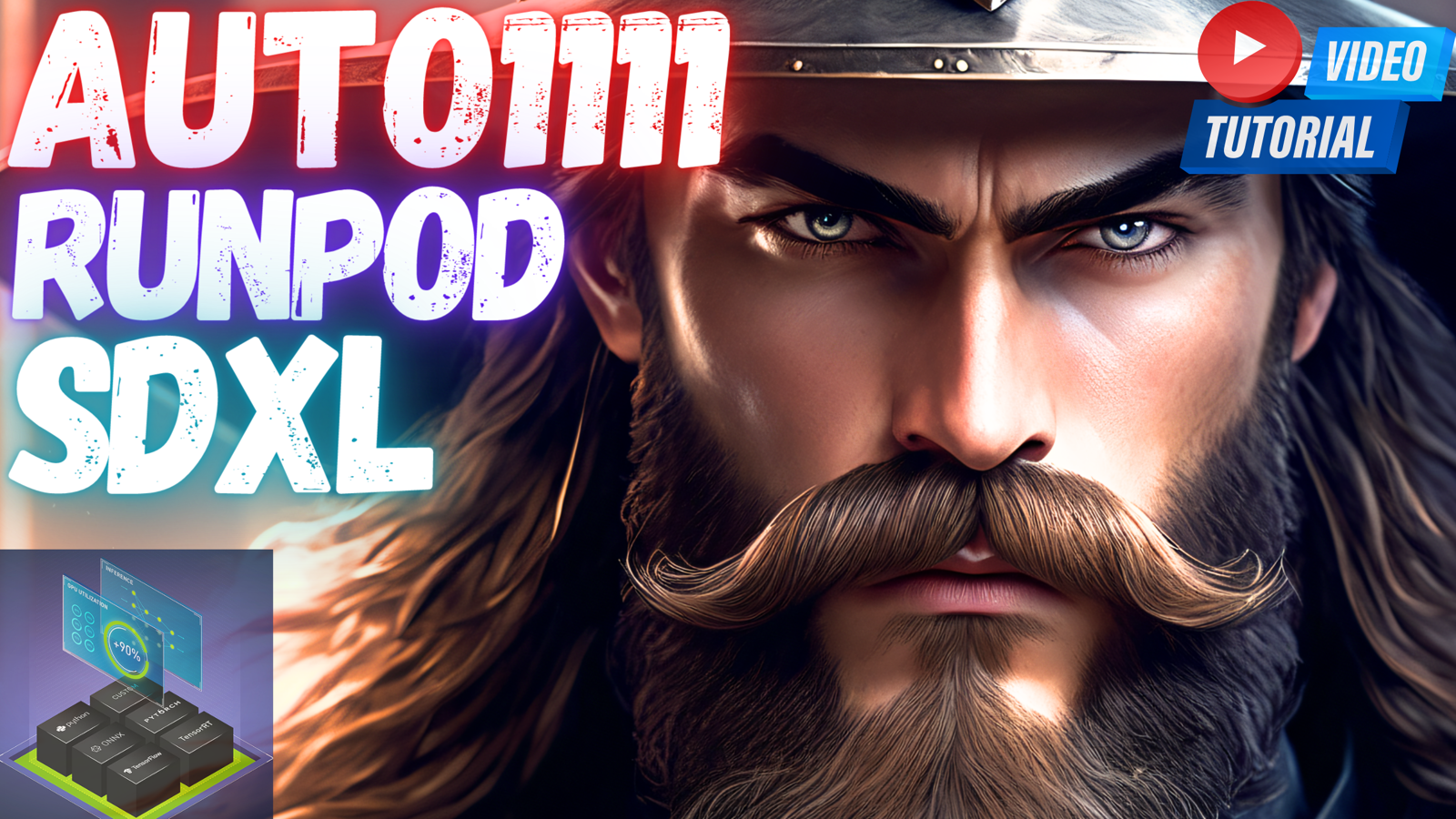Our beloved #Automatic1111 Web UI is now supporting Stable Diffusion X-Large (#SDXL). In this video I will show you how to install and use SDXL in Automatic1111 Web UI on #RunPod. Moreover, I will show how to do proper high resolution fix (Hires. fix) workflow. Furthermore, I will test the speed of Automatic1111 with SDXL on a cheap RunPod RTX 3090 GPU.
Source GitHub Readme File ⤵️
1 Click Installer For SDXL and Automatic1111 Web UI ⤵️
https://www.patreon.com/posts/1-click-runpod-86438018
Our Discord server ⤵️
[Blocked Link]
If I have been of assistance to you and you would like to show your support for my work, please consider becoming a patron on 🥰 ⤵️
https://www.patreon.com/SECourses
0:00 How to install and use SDXL with Automatic1111 on RunPod tutorial intro
0:27 How to use Stable Diffusion XL (SDXL) if you don't have a GPU or a PC
0:55 How to login your RunPod account
1:11 Select which RunPod machine and template for SDXL
1:22 How to increase RunPod disk size / volume size
1:40 Where to see logs of the Pods
1:50 How to connect the Pod JupyterLab interface
2:04 The first thing you need to do is editing relauncher.py file
2:46 How to install SDXL on RunPod with 1 click auto installer
3:24 Continuing with manual installation
4:32 GitHub branches are explained
5:04 How to update your Automatic1111 Web UI to the latest version via git pull
5:50 How to download SDXL models to the RunPod
6:34 How to download Hugging Face models with token and authentication via wget
7:58 How to start Automatic1111 instance on RunPod after installation
8:44 Amazing Stable Diffusion prompts,
9:56 Sometimes pods may be broken so move to another new pod
10:15 Speed testing SDXL on RTX 3090 having pod
10:51 High resolution fix testing with SDXL (Hires. fix)
11:04 Hires. fix steps image generation speed results
11:41 How many steps do Hires. fix use
11:55 Amazing details of hires fix generated image with SDXL
12:24 The correct workflow of generating amazing hires. fix applied images
14:41 Base image vs high resolution fix applied image comparison
15:19 If you don't know how to use Automatic1111 web UI
In this video, the presenter demonstrates how to use Stable Diffusion X-Large (SDXL) on RunPod with the Automatic1111 SD Web UI to generate high-quality images with high-resolution fix. The video also includes a speed test using a cheap GPU like the RTX 3090, which costs only 29 cents per hour to operate.
The video starts with the presenter introducing the topics they will cover. They mention that they have prepared a detailed GitHub readme file containing all the necessary instructions and commands, which will be regularly updated in the future based on viewer feedback. The link to this file is provided in the video's description and comment section.
The first step demonstrated is how to log in to RunPod, and the option to register is also mentioned for those without an account. The presenter proceeds to show the audience how to start two instances of RunPod, one for automatic installation and the other for manual installation. They use the Stable Diffusion template and specify the volume disk size, choosing 100 GB in this case.
The presenter emphasizes the importance of modifying the relauncher.py file in Stable Diffusion web UI to enable proper functioning and killing of the initially started web UI instance. This step is necessary for both automatic and manual installations. They also show how to use their one-click installer for automatic installation, which streamlines the process.
For the manual installation, the presenter walks through the steps in detail. They explain the concept of branches in the Automatic1111 web UI repository and how to update the web UI to the latest version. They then proceed to download SDXL models from Hugging Face using tokens generated from the user's Hugging Face account.
Once everything is set up, the presenter demonstrates how to generate images using the Automatic1111 web UI. They provide example prompts and show how to generate images using both low-resolution and high-resolution fix settings. During the process, they encounter some issues with the pod and restart it to continue the demonstration.
After generating images, the presenter compares the results and emphasizes the high-quality output of SDXL, surpassing SD 1.5. They also show how to use the high-resolution fix to upscale images and improve their quality.






